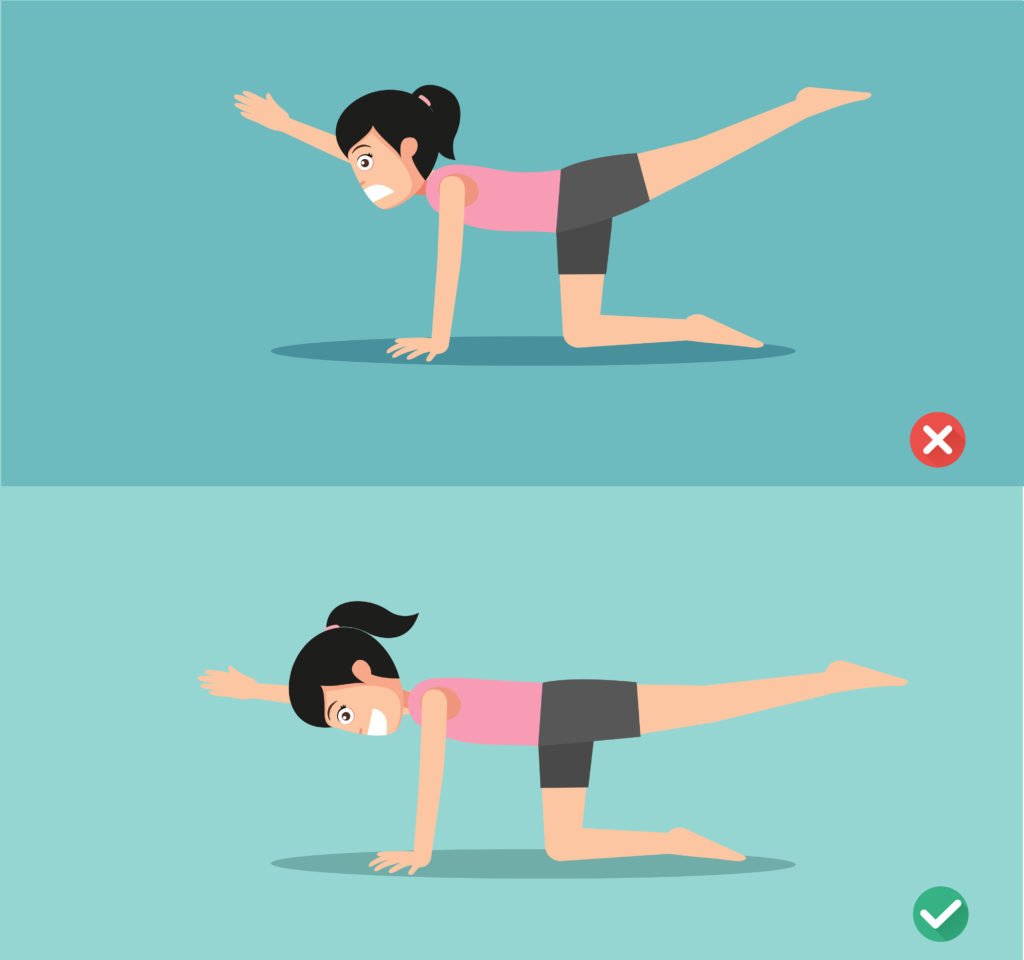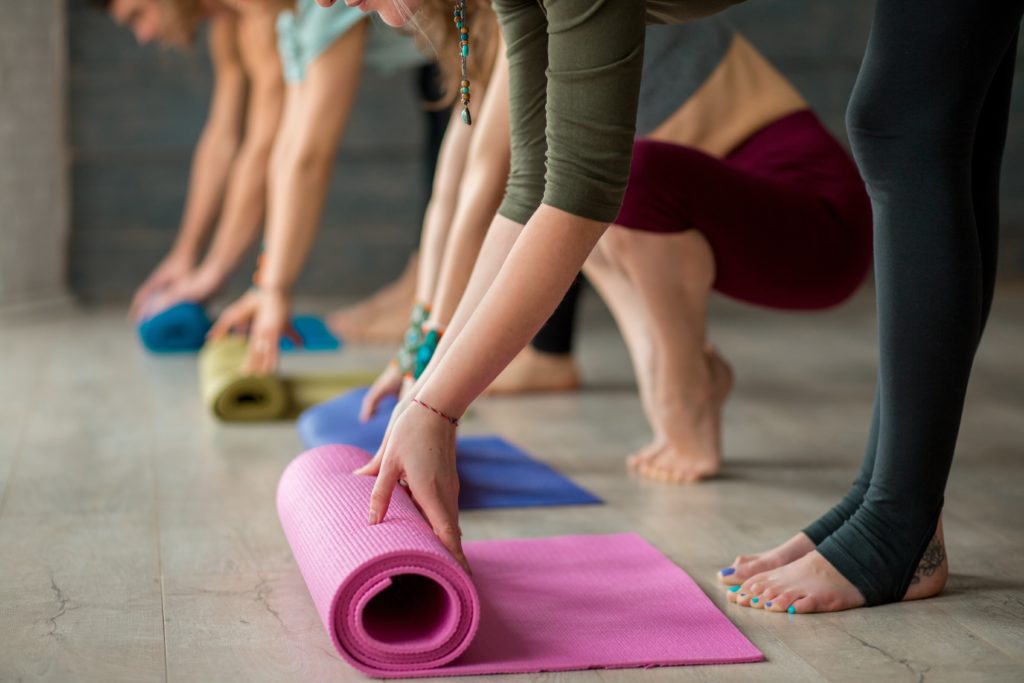Are you looking for the perfect activity to get you in great shape? Have you tried Yoga? If not, today is a great day to learn more about Yoga and have your first Yoga session. Yoga is a holistic discipline that offers a better lifestyle and shapes your overall well-being. Yoga involves physical exercises, asanas, meditation, breathing techniques, Mudras, bandhas, and much more.
Yoga works well on almost every muscle and physiological system of the human body. For the uninitiated, you stretch and bend your body a lot while practicing Yoga postures. It is common to develop a sore body now and then, especially when you are new to Yoga.

Here Is Why You May Sustain Injuries During Yoga
- Hasty Exercise
Yoga is a holistic exercise that works on almost every part of the human body. Every Yoga posture is unique, and one must practice them consistently to develop finesse. Practicing Yoga asanas one after the other in a hurry without understanding their concept could be damaging to your body, and you may end up straining your muscles. Yoga asanas are typically performed at a moderate pace and never very fast. You may develop a sore body if you put speed over technique while performing the asanas.
- Irregular Practice
Yoga is beneficial for a robust physique only if you practice it regularly. A rapid increase in the duration or intensity of your Yoga practice does not let your body acclimatize to the effects of the asanas. You are more likely to sprain your ankle or develop a painful shoulder if you are not regular with your Yoga practice.
- Rigid Physique
Yoga is all about flexible muscles, stretching your body, and going with the flow of the asana that you are performing. You need to relax your body and give in to the ultimate experience of Yoga to enjoy its benefits. Keeping your muscles rigid during Yoga may give you uncomfortable back pain, a sore back, or a swollen wrist.

- Lack Of Focus
Physical and mental focus plays a vital role in making your Yoga journey successful. It is crucial to focus on your Yoga trainer’s instructions before you practice an asana independently. You must shift the focus on your body while practicing the asana to avoid overstretching or bending your body excessively or incorrectly. Injuries often result from being inattentive while learning and practicing Yoga.
Several other factors may contribute to developing injuries when you are learning Yoga. Let us proceed to the next section of the blog to learn some tips on avoiding Yoga injuries and lessening their impact.
How To Prevent Injuries When You Practice Yoga?
Yoga injuries are an inevitable truth, especially when you are still learning its techniques. However, you can reduce the frequency of the injuries and their impact if you follow some simple rules while practicing Yoga.
- Adequate Warm Up
Yoga asanas stretch your muscles from head to toe and give your body much-needed physical activity. But you cannot simply jump onto your Yoga mat and twist your body into a Yoga posture. Set aside at least five minutes to warm your body with simple and low-intensity stretching exercises before Yoga. A good warm-up session will stimulate and prepare your muscles for a healthy Yoga session.

- Learn From A Certified Trainer
The best way to avoid over-stretching your muscles or spraining your ankle is to practice Yoga without any postural errors. If you are new to Yoga or are resuming after a long hiatus, practicing under a Yoga trainer’s guidance is advisable. They will correct your body posture, give you advice on enhancing the effects of Yoga, and train you to avoid any injuries.
- Know When To Stop
Social media fads compel people to set unrealistic fitness goals by following specific exercise regimens. You cannot sculpt a robust and healthy physique by constantly pushing yourself out of your comfort zone while practicing yoga. Stop your Yoga session and rest for some time if you experience any discomfort during any Yoga posture. Allow your sore body some time to relax before you resume Yoga again.
- A Timed Yoga Session
Physical discomfort is not the only factor that should stop you from continuing your Yoga session. Keep track of your Yoga sessions and avoid exceeding one hour at a time. You may choose a suitable time duration to practice Yoga depending on your health, your daily routine, and your health needs. Practicing Yoga without a break or for a very long time is likely to make your muscles sore and swollen.
- The Perfect Cool Down
A cool-down is as important as a warm-up session when you practice Yoga. You cannot be stretching your body into a perfect split one minute and lying down on your couch the next minute. Doing so will only give you a stiff and painful posture for a few days. Allow your body muscles to relax gradually after your Yoga session with a guided cool-down session. Continue light stretching exercises till you feel your heartbeats and breathing returning to an average pace.
- Salt Bath
Soak in an Epsom salt bath after your Yoga session to soothe those exhausted muscles, and feel the stress leaving your body. You may also use calming bath oils like lavender or chamomile to experience the best post-Yoga relaxation. It is inevitable for your muscles to develop mild fatigue after Yoga. A hot relaxing bath with salts or oils will prevent the stressed muscles from developing soreness or inflammation.

- Adequate Rest
You are the best judge of your capacity. Know your physical limits and give your body adequate rest after every Yoga session. That way, you can replenish your energy levels and return to your next Yoga session with renewed vigor.
- Yoga Mat
A Yoga mat is a highly underrated accessory that makes Yoga practice easier. A Yoga mat is designed to increase friction and reduce the load on your joints while you perform asanas. It is advisable to use a rug to reduce the risk of losing balance and subsequent injuries during your Yoga session.

- Identifying Problematic Yoga Poses
Though Yoga is meant for everyone, your body may not be meant to perform every Yoga asana. Old health issues, natural physical traits, or general health may not allow you to practice all Yoga postures with equal ease. You must identify the Yoga asanas that cause recurring pain, discomfort, or physical stress. It is best to avoid these Yoga asanas and prevent any relevant tissue injuries.
- Hydrate Yourself
Exercise injuries do not always result due to external factors like postural errors or excessive stretching during Yoga. Inadequate water intake increases the chances of muscle fatigue and subsequent muscular strain. Take sips of water during your Yoga session to prevent dehydration. Avoid gulping down large quantities of water before, during, or immediately after practicing Yoga to avoid digestive discomfort.

People’s physical traits, health needs, and fitness goals are unique to their lifestyles. It is crucial to understand your body well to avoid injuring yourself during Yoga. Stay happy and healthy, and enjoy a blessed life with Yoga!
To learn more about Yoga, read more from our Blog section.







